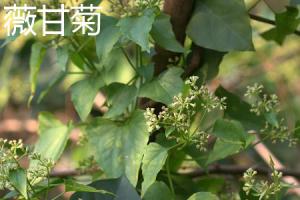Introduction
Plants and trees have long been regarded as the main sources of renewable resources. The renewable nature of these resources lies in the fact that they are capable of being replenished naturally and can be used without causing any significant harm to the environment. This article aims to explore the different aspects of plants and trees as renewable resources and their importance in sustaining our environment.
The Role of Plants and Trees in the Environment
Plants and trees play an essential role in the environment. They are responsible for producing oxygen, regulating air quality, providing habitats for wildlife, and preventing soil erosion. These resources also contribute to the food chain, providing nourishment for humans and animals alike. Furthermore, plants and trees absorb and store carbon dioxide, reducing its presence in the atmosphere and helping to prevent global warming. Without these resources, life on Earth would not be sustainable.
Renewable Nature of Plants and Trees
One of the primary reasons why plants and trees are considered renewable resources is that they can regenerate and reproduce themselves over time. For example, a tree can produce a new seedling that can grow into a new tree. This process can happen repeatedly, making trees a sustainable resource over the long term. Moreover, plants can also regrow after being harvested, making them highly renewable. This renewable nature of plants and trees makes them a great source of raw materials for various industries.
Uses of Plants and Trees as Renewable Resources
There are numerous ways in which plants and trees are used as renewable resources. One of the most common ways is in the production of timber and other wood-based products like paper. These resources are used in construction, furniture, and packaging. Plants like corn, soybeans, and sugarcane are used in the production of biofuels. Plants are also used in the manufacture of fibers used in clothing and textiles. Moreover, plants and trees are used in the production of essential oils, perfumes, and medicinal drugs. These resources are valuable and have numerous applications.
Challenges to the Sustainability of Plants and Trees
Despite the renewable nature of plants and trees, there are some challenges to their sustainability. Deforestation, habitat destruction, overharvesting, and climate change are all factors that threaten the continued existence of these resources. Deforestation and habitat destruction can result in the loss of biodiversity and the degradation of soil quality, while climate change can result in the decline of certain plant and tree species. Overharvesting of these resources can lead to depletion and loss of forests, which can have long-term effects on the environment. It is essential to manage these resources sustainably to ensure their continued existence.
Conclusion
In conclusion, plants and trees are essential renewable resources that play a vital role in the environment. They are capable of regenerating themselves over time and can be used in many industries. Despite the numerous uses of these resources, there are also challenges to their continued sustainability, which need to be addressed. It is essential to manage these resources sustainably to ensure that they continue to support life on Earth.

 how many times do yo...
how many times do yo... how many planted tre...
how many planted tre... how many pine trees ...
how many pine trees ... how many pecan trees...
how many pecan trees... how many plants comp...
how many plants comp... how many plants can ...
how many plants can ... how many plants and ...
how many plants and ... how many pepper plan...
how many pepper plan...





























